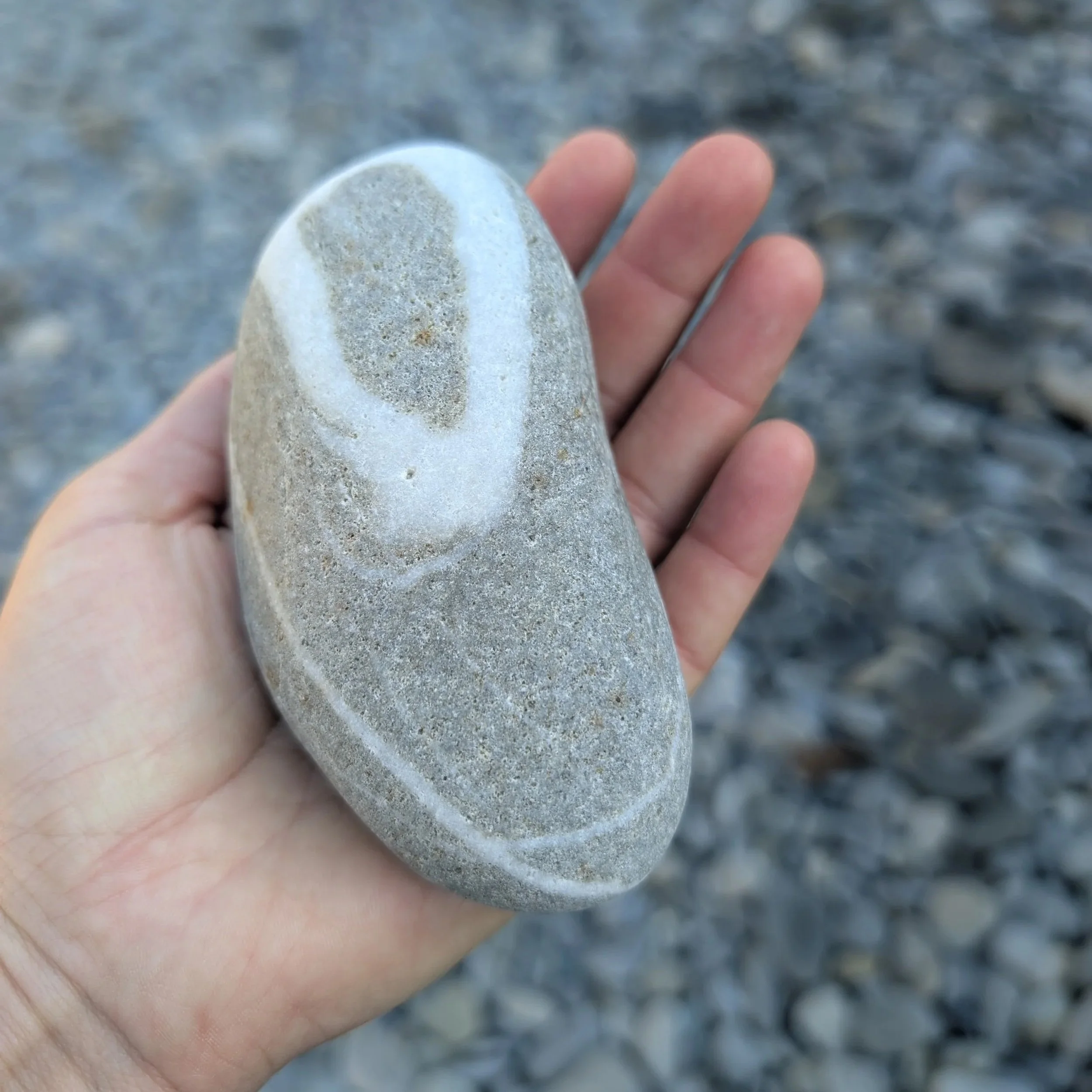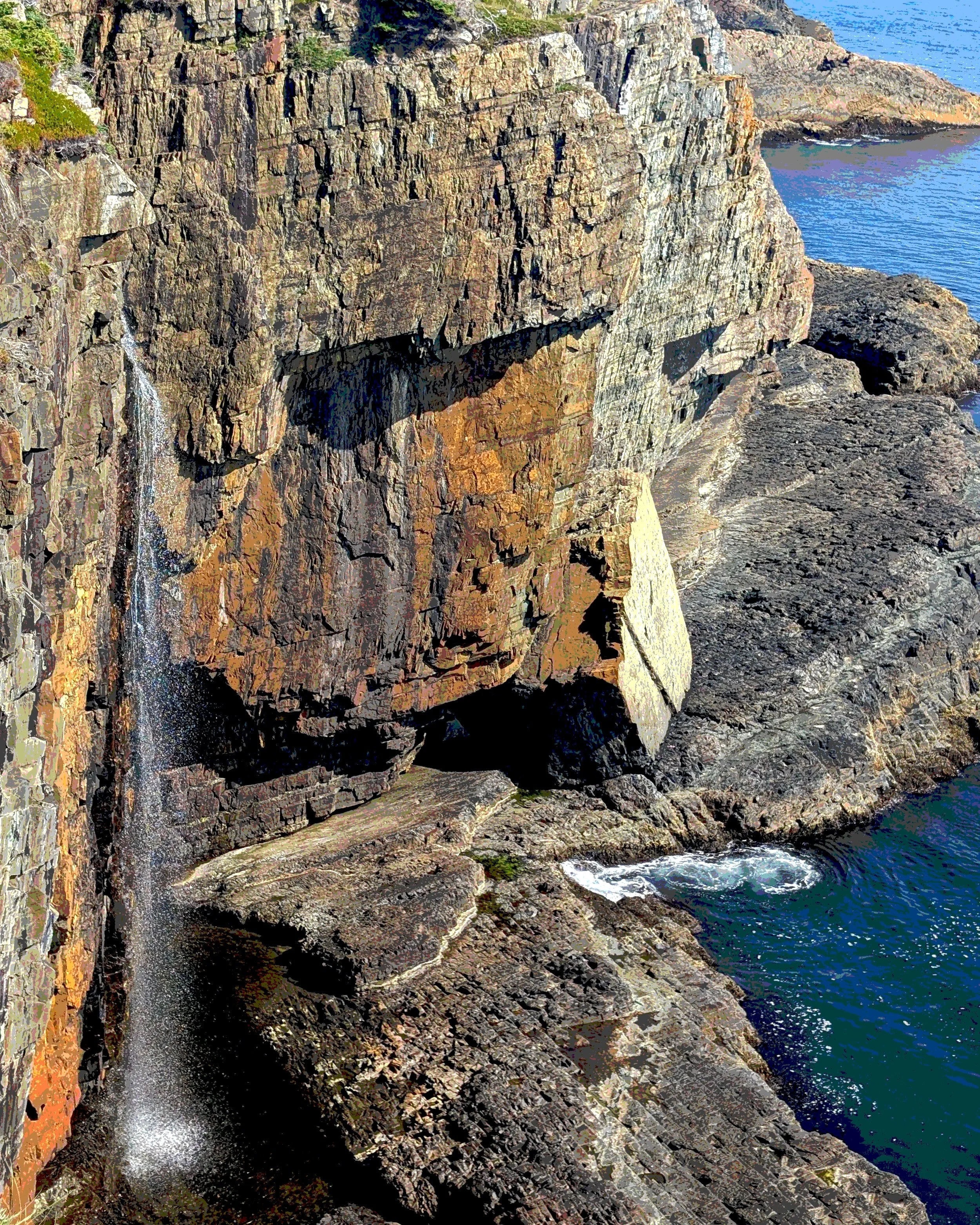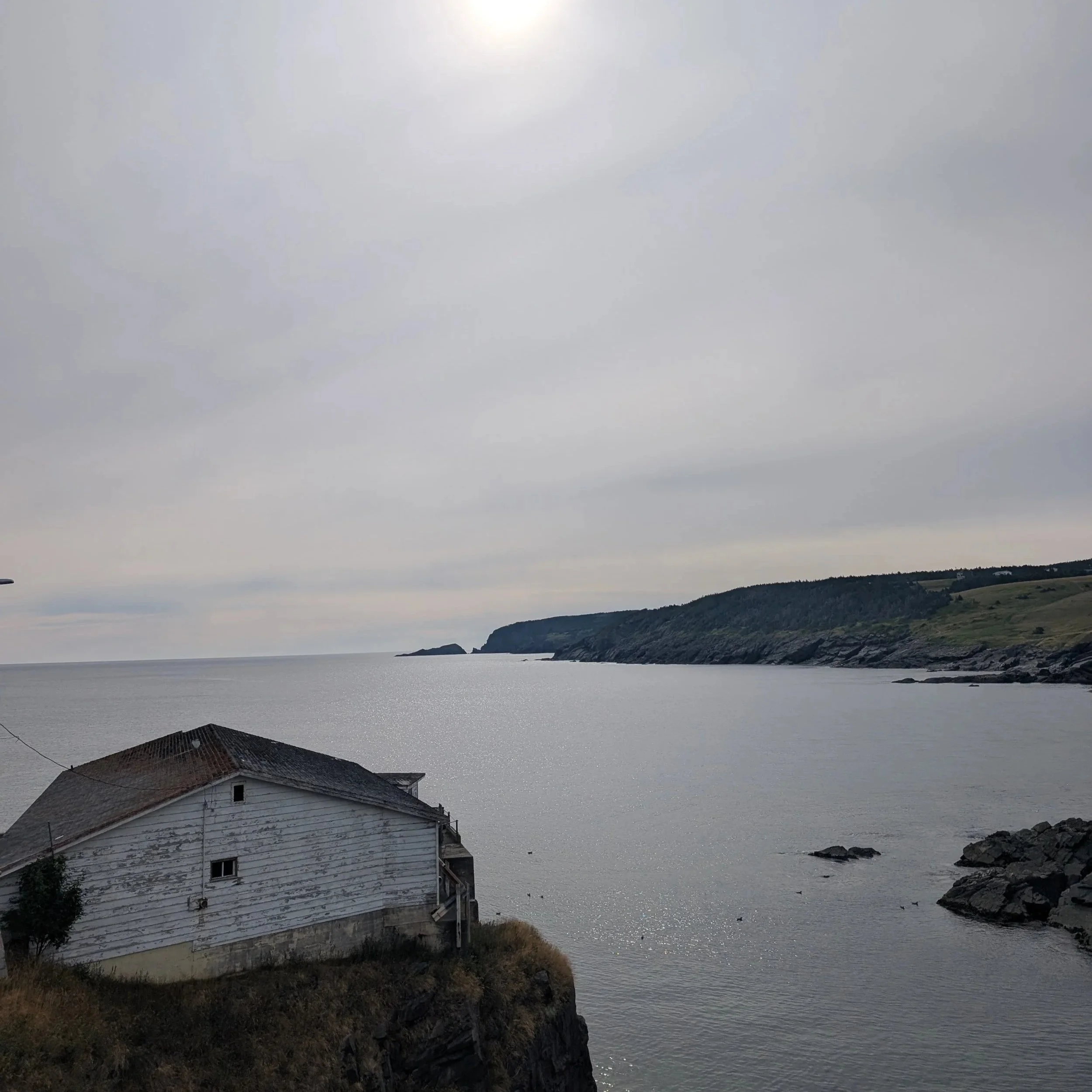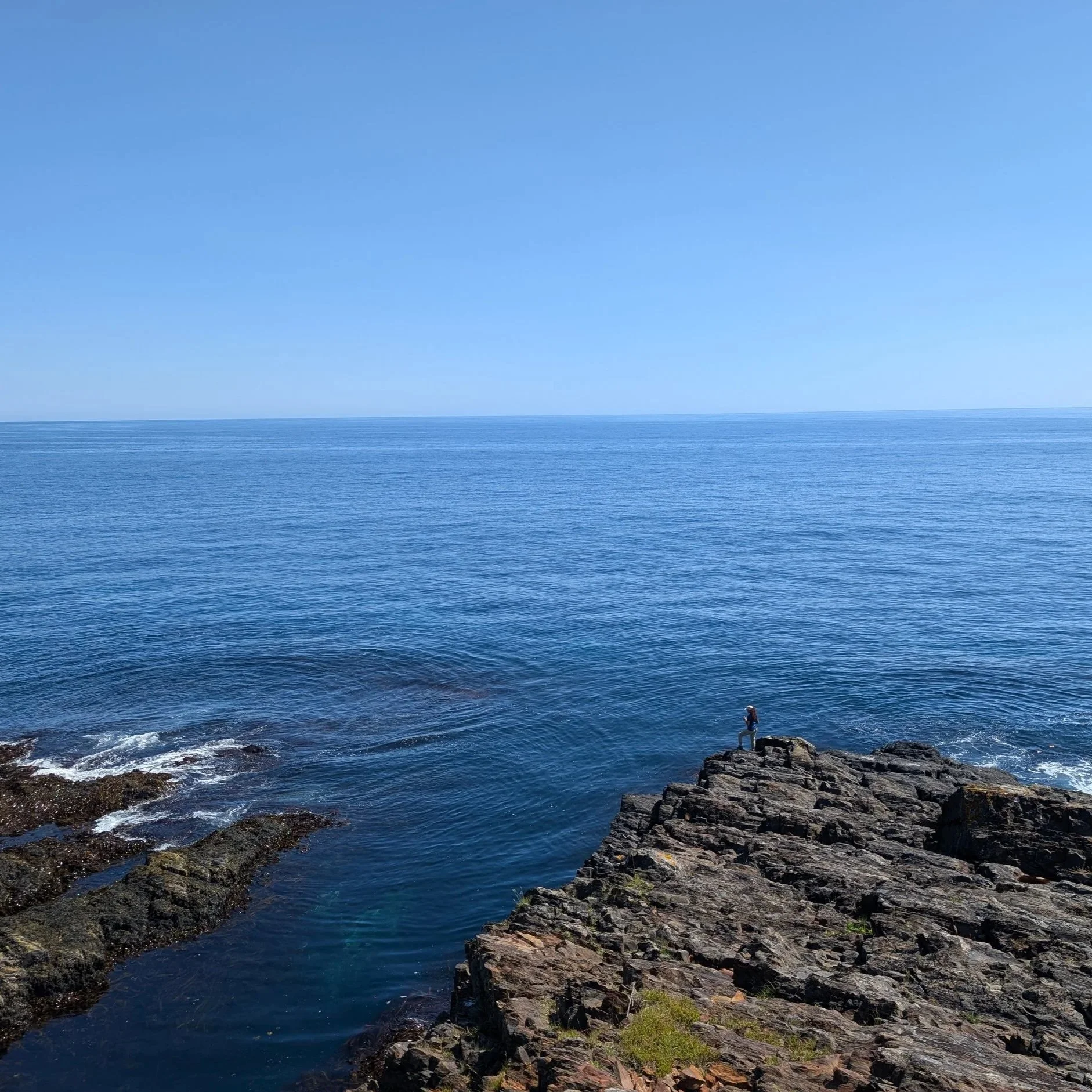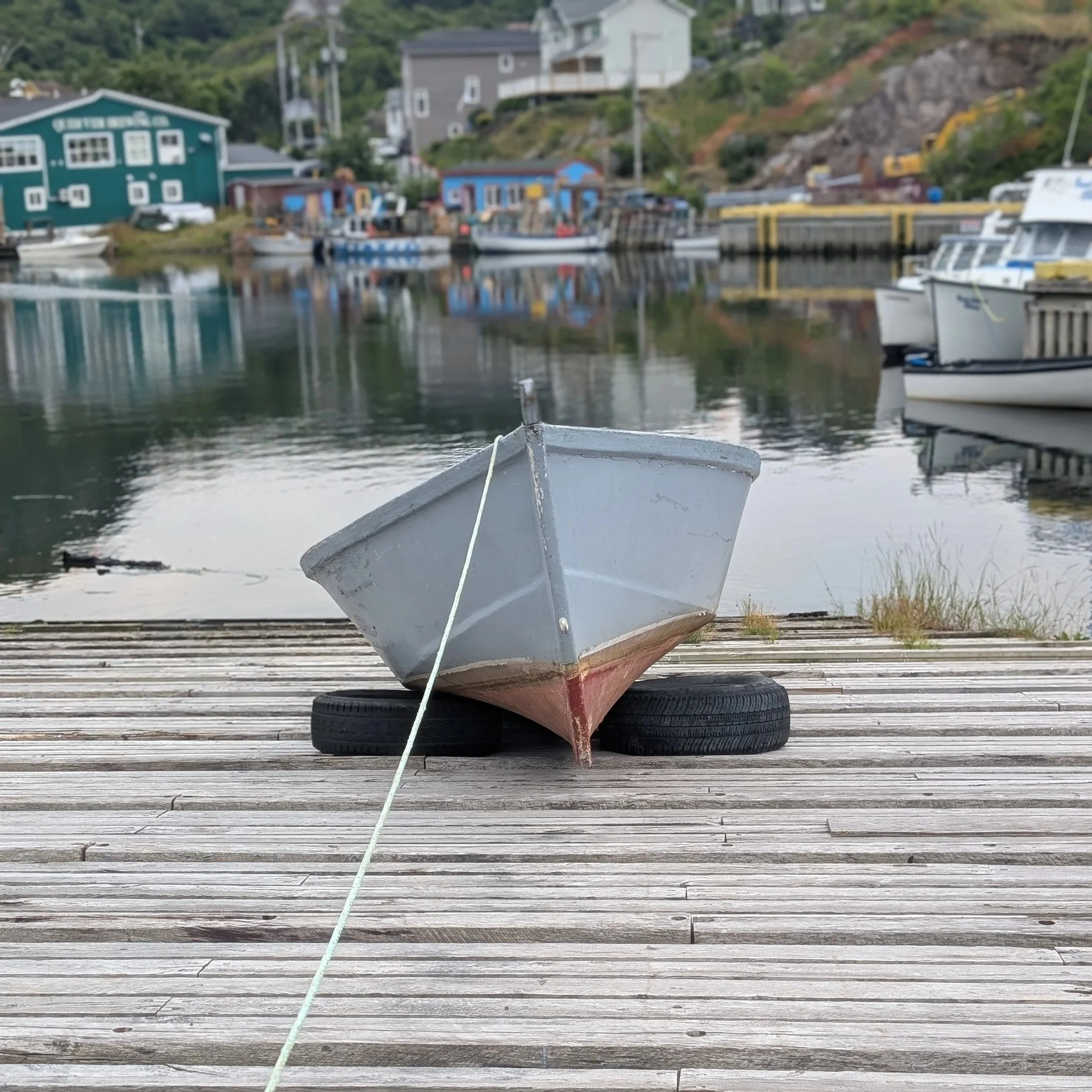The Knot That Brought Me Here
Thirty years ago, I read a book I had to put down every few pages in order to properly absorb an eloquent line. By the third chapter, I knew I needed to visit it’s setting in Newfoundland, Canada. As with all good books, it was “about” many things, but knots held a certain significance: each chapter began with a description and an illustration of a knot that hinted at the characters upcoming experiences.
This story instilled an expectation that books have the power to pause existence for a moment. It shook me in a good way. So I wanted to see what had shaken the author enough to nestle her story into the coves and the villages of Newfoundland’s shoreline.
Last month, I finally went. A friend and I hiked about half of the trail that stretches the east coast of the island. There were hints of the book along the way, not least this small knot of rope coming further untied with every passing car.
The book was a mood, a darkness in its content and its setting. I’m a sucker for a stark landscape so it appealed to me then and still does.
As with just about everything with anticipated expectations, the trip was nothing like the book. My visit coincided with a drought and unseasonably sunny weather on “The Rock.” The main character in the story was returning to a place his ancestors called home; my friend kept saying that it felt like home to her. It didn’t for me, and that is entirely alright.
I enjoyed borrowing its trail, its ocean, and the lilting voices of its people for a few weeks. Living in landlocked states all my life, the constant companionship of the ocean was a novelty; it stretched smooth and clear to the horizon all the way to Europe. The sheer scale tilted my body a little further towards the land just to root myself.
Speaking of roots, they covered the trail from tip to tail. Their fingers spread across the path as we walked through fairyland forests full of moss and damp and hollow thumps as our feet hit the ground.
The actual place wasn’t anything like I thought it would be. That’s a good thing.
It was a walk with a friend where we had one job: to hike. Simple but not always easy. We talked some, didn't other times. Laughed in the evenings with the windows open and the briny wind blowing in. Taped our feet and took Advil and heard whales on the ocean below before we saw them.
I started reading the book again as soon as we landed in Newfoundland. As with all the times I’ve re-read it, different parts spoke to me. The lines marked in pencil from my teenage years were entirely different than the ones from my early adulthood and the ones from last year. The story took on new meaning, not least because I heard the ringing accents of Newfoundlanders as I read the dialogue and heard the ocean as I moved through the chapters.
I was a different person as turned the yellowed pages of the first and only copy of the book I have; the girl who first read it from her armchair with air-conditioning keeping her cool in a Texas summer and the woman read lying down next to an open window after a day of walking a coastal trail.
Her words let me dream about a place in the intervening years. It got me to buy plane tickets and say yes and put my feet on a piece of earth I wouldn't have otherwise.
The power of that book let me see three layers of the same physical place: the one in the pages, the one I made in my mind, and the real thing. They exist temporally, spatially, and in all the in-between.
Sometimes those layers would come together like the knots that begin each chapter. In the last line of the book, the author says – “It may happen that a crab is caught with the shadow of a hand on its back, that the wind be imprisoned in a bit of knotted string.”
It ties a bow, in a way. A loose knot. Not the kind that holds but the kind that invites, encircles, and envelops. That begins ones place, circles around itself, and comes out somewhere entirely different.

